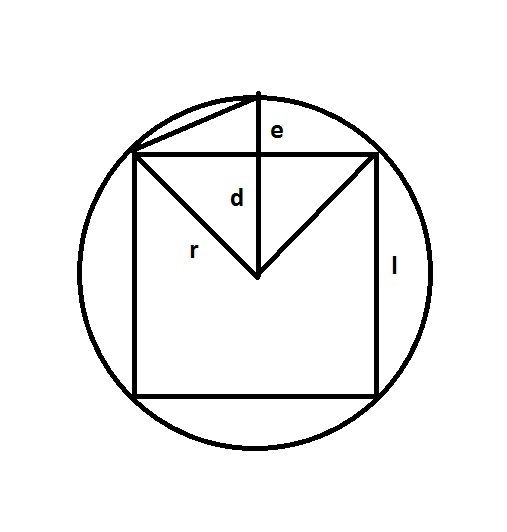 | ||
Zhao Youqin's π algorithm was an algorithm by Yuan dynasty astronomer-mathematician Zhao Youqin (赵友钦, ? – 1330) to calculate the value of π in his book Ge Xiang Xin Shu (革象新书).
Algorithm
Zhao Youqin started with an inscribed square in a circle with radius r.
If
Extend the perpendicular line d to dissect the circle into an octagon;
Let
similarly
Proceeding in this way, he at last calculated the side of a 16384-gon, multiplying it by 16384 to obtain 3141.592 for a circle with diameter = 1000 units, or
He multiplied this number by 113 and obtained 355. From this he deduced that of the traditional values of π, that is 3, 3.14, 22/7 and 355/113, the last is the most exact.
